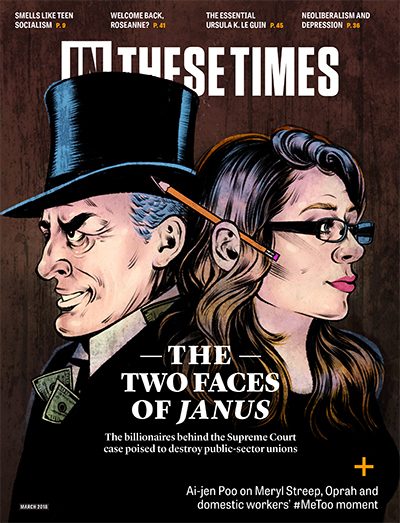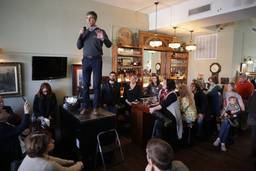Cooperative Banking for Black Lives
After facing decades of disinvestment and targeting by powerful financial institutions, African-American-owned credit unions could offer a way to build economic power and grow black wealth.
Valerie Vande Panne

MINNEAPOLIS — On an unseasonably warm Friday in late January, African-American business owners, activists, advocates, musicians, politicians and artists toasted with a “come-up” cocktail: a healthy mix of Goldschläger, vodka and sparkling cider over ice.
A “come-up” signifies making it to the next level — and assembled community members used the moment to reflect on recent progress and envision the years to come. The party, hosted by the Association for Black Economic Power (ABEP) at its new office in North Minneapolis, celebrated the growing local movement to empower the black community to invest in its own neighborhoods and divest from systemic harms (such as institutions that extract local resources and wealth).
And there was much to celebrate: For one, the 2017 city council victories of event speakers Andrea Jenkins (the first African-American, openly trans woman to be elected to public office) and Jeremiah Ellison (son of Minnesota Congressman Keith Ellison).
For another, ABEP’s progress toward the creation of an African-American credit union, Village Trust Financial Cooperative. The idea was born in the wake of the police killings of Philando Castile in July 2016 and Jamar Clark in 2015, and the five Black Lives Matter protesters shot by a white supremacist, also in 2015. For Me’Lea Connelly, it was too much. She wondered how the black community might, actively and democratically, determine how to engage in protest without risking the lives, bodies and mental health of its young people.
Connelly facilitated a number of community meetings that collectively determined to pursue a strategy of financial divestment and reinvestment, ultimately deciding to build a credit union. They voted on the name “Village Trust.”
“It is critical we build our own structures for investment in our home communities,” Jenkins said at the event.
The black community is highly targeted by marketers, aiming to capture a buying power estimated to reach $1.4 trillion by 2020. That’s a lot of money to take out of giant corporations and invest in local communities.
“We’re in a moment where corporate power is pretty high, wealth disparity is widening,” Ellison said. “Being able to recapture that and say that we’re going to create a class of folks who can afford to live in this country comfortably, not have one or two billionaires, but have plenty. … I think that’s what it means to build black wealth.”
Historically, that wealth has been extracted from the community. In the Twin Cities region, for example, from 2004 to 2006, half of mortgages to blacks were subprime, compared to 10 percent to whites. Denied access to banks and capital through racist practices such as redlining, payday loan locations often become a community’s default financial institutions, where an emergency loan of a few hundred dollars can carry a 450 percent interest rate.
“When you strip any community of economic resources, what’s left is violence,” Connelly tells In These Times. “The systems of inequity are violent.”
Village Trust’s goal is to provide an affordable and accessible place to bank that keeps black wealth in the community and builds it democratically. Village Trust’s lead organizers are “here as stewards to do what we’re told,” says Connelly, “and to make sure the entity is sustainable.” ABEP has a page on its website where the community can communicate needs directly to the credit union.
“Instead of talking about stuff we can’t fix ourselves, people pay attention when you talk about money and changing the way the system works,” Kevin Chavis, a local political organizer and SEIU steward, tells In These Times. “Where we move our money shows us where our values are as well.”
Connelly led the crowd in a call and response: “Those of you who were told you were too loud, too disruptive, who loved their honey-dripped molasses voices too much to be quiet, so we could — ”
“Come up!” the party called back.
“I want to honor the black women who … refused to put up so that we could — ”
“Come up!”
At the end of the evening, ABEP executive committee member Amber Jones had a simple request: Share their ideas with a friend.
“A lot of this work starts at the heart level,” Jones said. “We’re not just creating a credit union. We’re creating a movement.”








